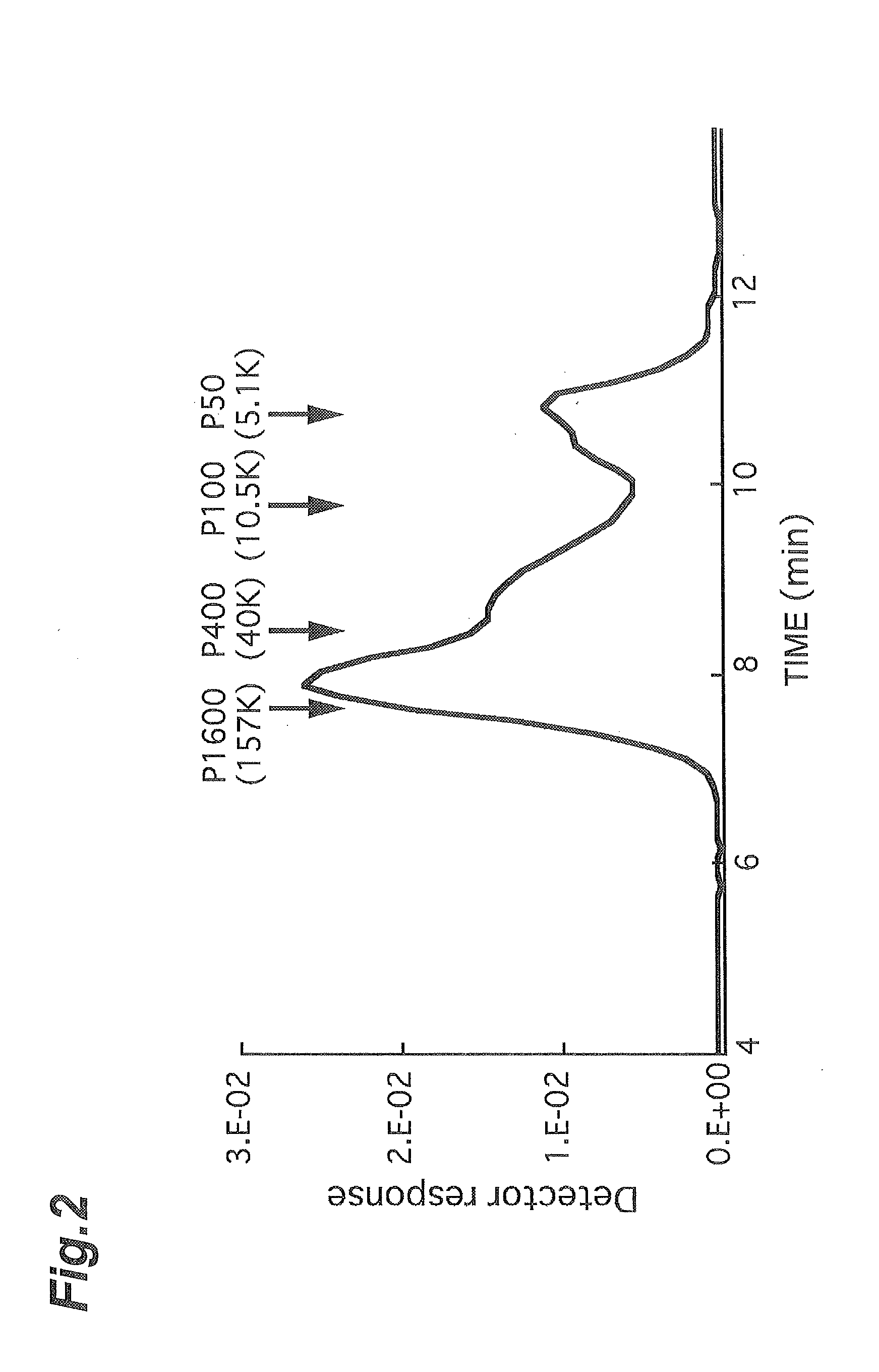Pectic polysaccharide and method for producing same
a technology of pectic polysaccharide and pectic acid, which is applied in the field of pectic acid polysaccharide, can solve the problems of protein aggregates and precipitates, the value of commercial products being significantly impaired, and the inability to achieve good stable state, etc., to suppress the aggregate precipitation of protein, reduce the effect of protein aggregates and low viscosity
- Summary
- Abstract
- Description
- Claims
- Application Information
AI Technical Summary
Benefits of technology
Problems solved by technology
Method used
Image
Examples
production example 1
[0042]Fifty kilograms of pea seeds (Yellow Peas) were hulled, subsequently, added with five times the amount of water, and immersed for 24 hours. The seeds were crushed with a homomixer (5,000 rpm, for 30 minutes), and protein and starch were extracted. Constituents dispersed in water, such as protein and starch were removed using a centrifuge at 1,500×g for 20 minutes, and fiber was collected. Furthermore, the fiber was added with five times the amount of water, stirred with the homomixer (3,000 rpm, for 30 minutes), and collected by the centrifugation (1,500×g, for 20 minutes). This operation was repeated twice, and freeze drying was performed to thereby obtain 10 kg of pea fiber. In 920 parts of water, 80 parts of pea fiber were dispersed. After the pH was adjusted to 5 using hydrochloric acid, the dispersed fiber was heated at 120° C. for 90 minutes to extract pectic polysaccharides. The insoluble fiber was removed by the centrifugation (5,000 rpm, for 30 minutes), and the super...
production example 2
Comparison of pH at Extraction
[0043]In the method for producing pea pectin A, exactly in same way except that the pH at extraction was set to 2, 3, 4, 6, 9, 12, or 13, and demethylesterification treatment was not performed, pea pectins B, C, D, E, F, G, and H were obtained.
production example 3
Comparison of Demethylesterification Treatment
[0044]In the method for producing pea pectin A, exactly in the same way except that pH at demethylesterification treatment was set to 8, 10, or 14, pea pectins I, J, and K were obtained.
[0045](Atomic Force Microscope Observation of Molecular Structure)
[0046]The molecular structures of the pea pectin A and commercially available HM-pectin (GENUPECTIN type USP-H: CP Kelco) were observed with an atomic force microscope. The result is shown in FIG. 1. It was possible to observe that, as for molecular structures observed by drying on mica, pea pectin A (FIG. 1, left) has a star structure and HM-pectin (FIG. 1, right) has a linear structure.
PUM
| Property | Measurement | Unit |
|---|---|---|
| diameter | aaaaa | aaaaa |
| diameter | aaaaa | aaaaa |
| pH | aaaaa | aaaaa |
Abstract
Description
Claims
Application Information
 Login to View More
Login to View More - R&D
- Intellectual Property
- Life Sciences
- Materials
- Tech Scout
- Unparalleled Data Quality
- Higher Quality Content
- 60% Fewer Hallucinations
Browse by: Latest US Patents, China's latest patents, Technical Efficacy Thesaurus, Application Domain, Technology Topic, Popular Technical Reports.
© 2025 PatSnap. All rights reserved.Legal|Privacy policy|Modern Slavery Act Transparency Statement|Sitemap|About US| Contact US: help@patsnap.com


